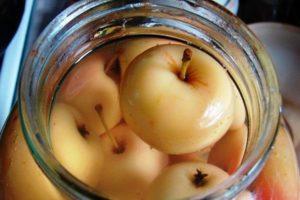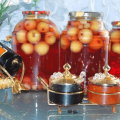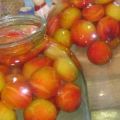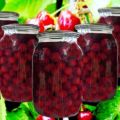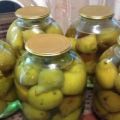TOP 5 simple and delicious recipes for making banana compote for the winter
Of the large number of homemade preparations, compote from ripe bananas harvested for the winter has recently become especially popular. Despite the seemingly exotic nature of such preservation, the process of its preparation is no more complicated than that of compotes from such familiar fruits and berries as apples, pears, plums, cherries, currants, sea buckthorn, strawberries.
The subtleties of cooking
The main subtleties of preparing this preservation include:
- Application, in addition to the main components, a small amount of berries - raspberries, blackberries, currants, strawberries - giving the workpiece a rich bright color and wonderful aroma.
- Exact adherence to the selected recipe.
- Use only carefully selected fruits.
- Thorough sterilization of containers and sealing lids.
- Use of a serviceable seaming key to tightly close the cans with lids.
Also, during the preparation process, make sure that dirt and foreign particles do not get into the ingredients placed in the jar, as this can lead to damage and fermentation of the workpiece during its storage..
Product selection features
The fruits and berries used for the preparation of banana compote must be:
- mature;
- clean;
- not damaged by diseases and pests.
Used, in addition to fruits and berries, sugar should be dry, crumbly and free of impurities.
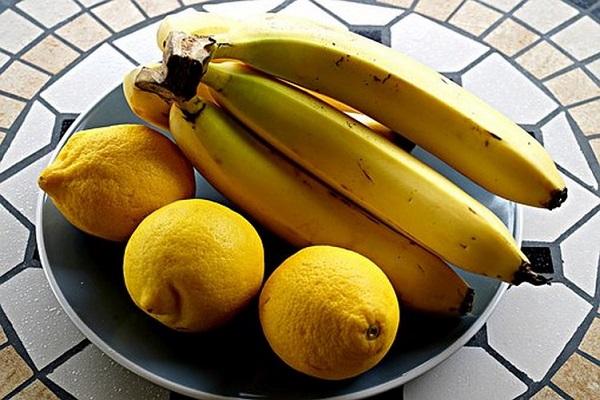
Cookware preparation rules
The container chosen for the compote (3 or 2 liter cans), as well as the sealing caps, must be prepared as follows:
- A little baking soda is poured into the jar and, using a damp sponge, thoroughly wash the inner surface of the container walls with it.
- After washing, the jar is rinsed under running water, turned over and excess moisture is allowed to drain from its walls.
- Jars are placed in the oven, turning the neck down.
- Preheat the oven with jars to a temperature of 150 FROM.
- When the oven warms up to the desired temperature, it is turned off and, opening the door, allow the jars in it to cool down.
- After the jars have cooled, they are taken out of the oven and placed on a clean table.
During the time the container is heated in the oven, the seaming and screw caps are prepared and sterilized: they are first washed with soda, then rinsed, placed in a saucepan with cold water and boiled over low heat for 10 minutes. After the lids have been sterilized, the container with them is removed from the gas and allowed to cool for some time.
When sewing cans, remove the lids from the pan with clean tweezers or well-washed hands.
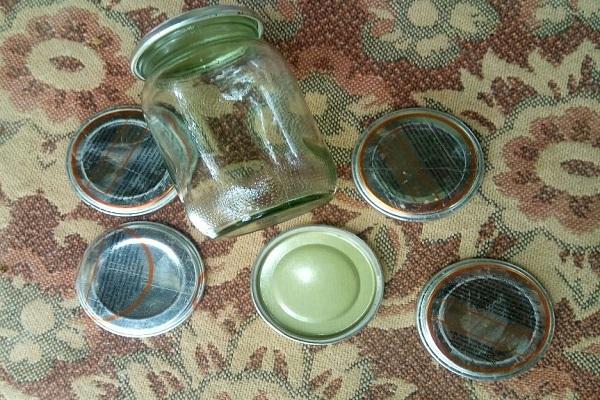
How to cook banana compote for the winter?
Of the large number of recipes for making banana compote, the most popular options are with apples, oranges or lemons, pears, and strawberries.
Classic recipe
The simplest banana compote is prepared as follows:
- 3 liters of water are poured into a large saucepan.
- The pot is set on gas.
- When the water in the pan boils, 250-300 grams of granulated sugar is dissolved in it.
- 5-6 ripe bananas with slightly blackened peels in places are cut into large round pieces.
- Pieces of bananas are poured into boiling water and cooked over low heat for 20-25 minutes.
- The finished compote is allowed to cool for some time.
Such compote, due to its simplicity and speed of preparation, can not only be rolled up in jars and used as preservation for the winter, but also cooked daily.
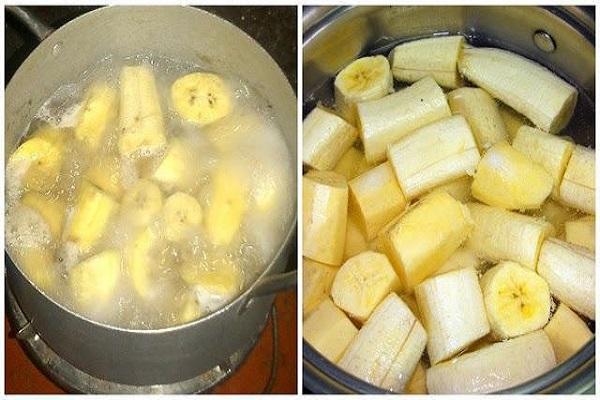
Apple drink
A rather tasty banana-apple compote is prepared like this:
- 500 grams of carefully selected and washed apples are cut into slices, from which all seeds and stalks are removed.
- One banana is peeled and cut into small round pieces.
- Sliced apples are placed in a large saucepan, poured with 3 liters of water.
- Put the pan on fire.
- Bring water in a saucepan to a boil and let the compote boil for about 5 minutes.
- Dissolve 200 grams of granulated sugar in a hot drink.
- Pour banana pieces into a saucepan with a hot drink, boil them for 5 minutes.
- Remove the pan with the finished compote from the stove and, covering it with a lid, let it brew for 30 minutes.
In order for the drink to be conveniently poured into cans or consumed fresh, it is filtered through cheesecloth.

With oranges and lemon
Banana compote according to this recipe is prepared as follows:
- 3 bananas and 1 orange (lemon) are thoroughly washed and cut into large pieces.
- 3 liters of water are poured into a large saucepan and 500 grams of granulated sugar (2 glasses) are dissolved in it.
- Put the pot on fire and bring the water to a boil.
- Pieces of bananas are poured into boiling water, they are allowed to boil in it for 10 minutes.
- Add chopped orange (lemon) to the compote, let it boil for 5-10 minutes.
The finished drink is removed from the heat and, after insisting for a while, is rolled into jars.
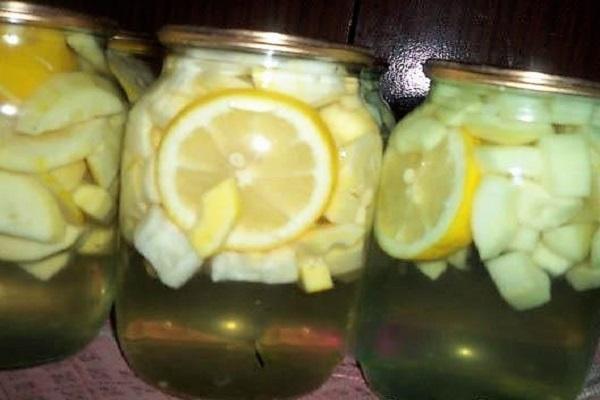
With pears
Such a compote is prepared by performing the following simple manipulations:
- 3 liters of water are poured into a saucepan, 400 grams of sugar are dissolved in it, and then put on fire.
- As soon as the water in the pan boils, add 400 grams of bananas, cut into round pieces, to it.
- Reduce the heat of the burner and cook the resulting compote for another 10 minutes.
- Add 200 grams of lemons and 300 grams of sweet pears cut into rings in turn. Each of the added ingredients is boiled for at least 5 minutes.
The finished drink is allowed to cool and brew.
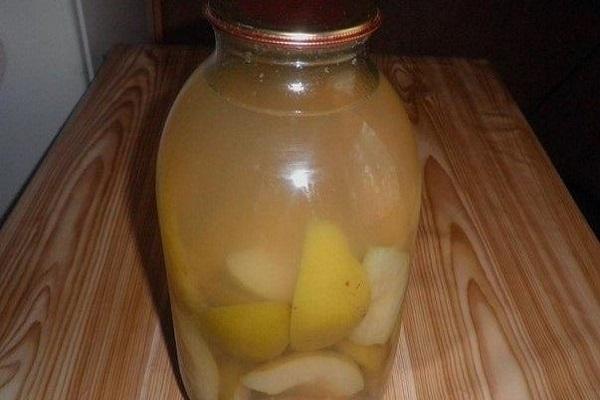
With strawberry
Banana-strawberry compote is prepared by alternately boiling a large banana and 400-500 grams of strawberries in 3 liters of water with 1 glass of sugar dissolved in it.
To give the finished drink sourness, add 1 teaspoon of citric acid to it.
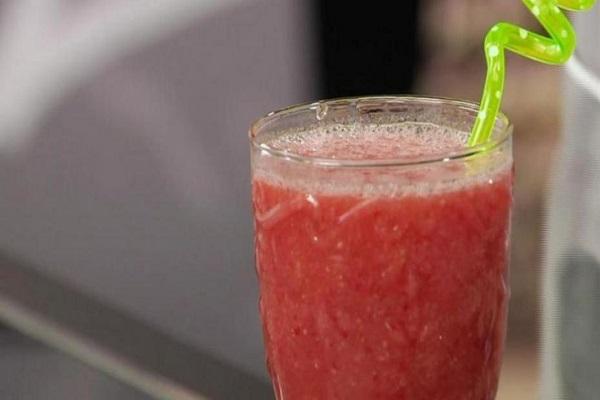
Harvesting for the winter and storage
Rolled up jars with banana compote, intended for use in the autumn-spring period, are stored in a cool place - cellar, underground, basement.
In this case, the containers are not placed on the ground, but on spacious wooden racks. This is necessary so that during storage it is possible to monitor the state of conservation, if necessary, remove blanks with cloudy contents or a lid that starts to swell.
